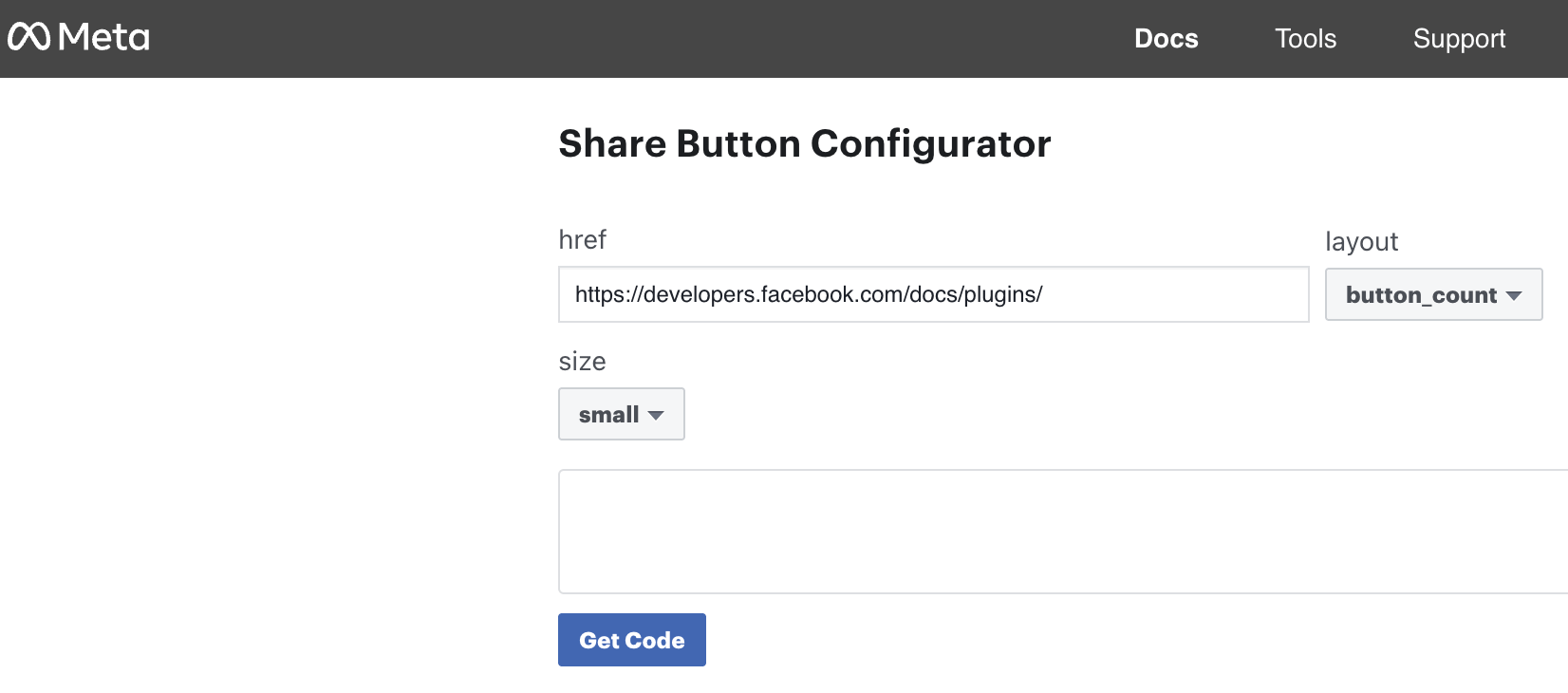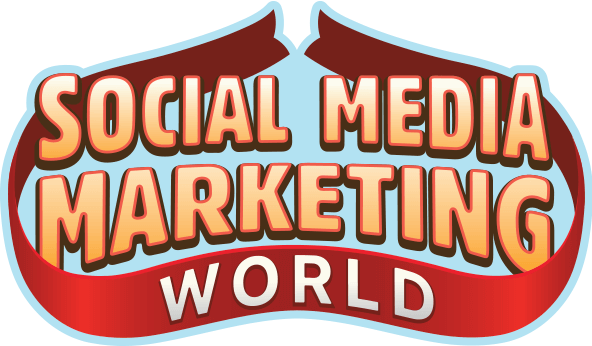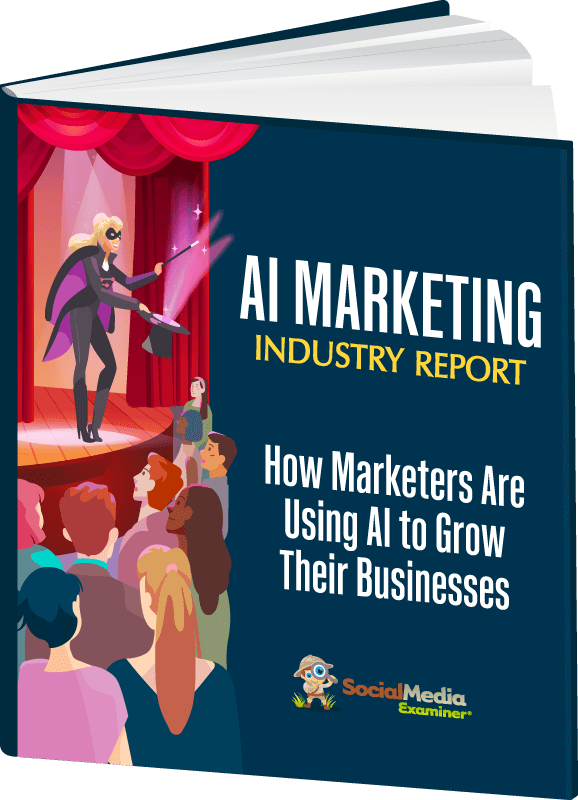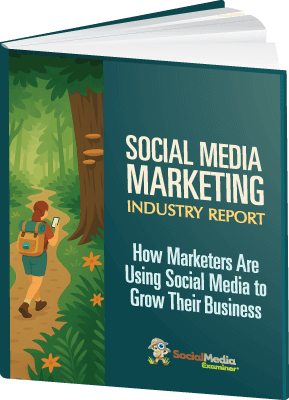Are you struggling to drive traffic from social media to your website? Wondering why your carefully crafted content isn't generating the clicks it once did?
In this article, you'll discover how to leverage zero-click marketing strategies to build influence and reach your audience when traditional click-based tactics are becoming increasingly ineffective.
What Is Zero-Click-Everything and How Does It Affect Marketing
For the first twenty years of the internet, digital marketers had a clear and effective playbook. Every marketer, whether focused on social media or search, was tasked with driving traffic from all platforms back to their website and content to convert visitors into subscribers and customers. This approach worked exceptionally well for two decades.
However, this landscape has shifted dramatically in what Rand Fishkin calls zero-click everything. This phenomenon describes how major platforms now keep users within their ecosystems rather than sending traffic elsewhere. When someone performs a search or engages with content on these platforms, they receive answers, entertainment, or information without ever leaving to visit external websites.
The scope of this change extends across virtually every major platform. Google answers search queries directly in results pages through featured snippets, knowledge panels, and AI overviews. LinkedIn demotes posts containing external links, reducing their reach and engagement. Twitter's algorithm shows fewer posts to users when those posts contain links. Facebook, Instagram, TikTok, Reddit, YouTube, and every other major platform have implemented similar policies designed to retain user attention within their own properties.
Many marketers mistakenly believe they're personally responsible for decreased traffic performance, wondering why they're not achieving the same results as previous months or years. The reality is that the entire digital ecosystem has fundamentally changed its relationship with external traffic generation.
Social Media’s Role in Engineering Zero-Click Trends
Understanding how this transformation occurred reveals why traditional digital marketing strategies have become less effective. This shift represents a deliberate business strategy where platforms realized that sending users away reduces their advertising revenue, engagement metrics, and data collection opportunities.
The irony runs deeper than many marketers realize because they inadvertently contributed to their own traffic decline. Those social sharing buttons that platforms encouraged websites to install, along with tracking pixels and cookies, provided these platforms with detailed user behavior data. This information enabled them to understand what everyone on the internet was interested in, allowing their algorithms to deliver precisely targeted content that kept users engaged within their ecosystems.

This data collection served multiple purposes for the platforms. It enabled sophisticated targeting for their advertising products, provided insights into what types of content generated the most engagement, and revealed user journey patterns that helped platforms optimize their retention strategies. The platforms monetized this information while simultaneously using it to reduce their dependence on sending traffic to external websites.
The transformation accelerated when platforms developed sophisticated content recommendation algorithms powered by this behavioral data. Instead of users actively searching for specific websites or content sources, they began relying on platform algorithms to surface relevant information directly within the platforms themselves.
AI's Role in Accelerating Zero-Click Trends and Search Growth
Artificial intelligence has dramatically accelerated zero-click trends, creating new challenges and opportunities for marketers. AI tools like ChatGPT, Claude, Gemini, and others represent the ultimate zero-click experience, providing detailed answers and recommendations while sending virtually no traffic to external sources.
However, recent Clickstream data analysis reveals surprising patterns in how AI adoption affects traditional search behavior. Contrary to many predictions, people who begin using AI tools actually increase their traditional search engine usage rather than replace it entirely.
Analysis of user cohorts who started using AI tools shows initial spikes in Google search volume that persist months after AI adoption. This occurs because AI tools often provide brand names, concepts, or partial information that users then research further using traditional search engines. For instance, someone asking an AI tool for product recommendations receives brand names but no direct purchasing links, so they subsequently search Google for those specific brands to find retailers or read reviews.
Google experienced significant search growth during periods of rapid AI adoption. However, this increased search volume coincides with dramatically decreased click-through rates from search results. Current data indicates approximately sixty-five percent of Google searches result in zero clicks, meaning two-thirds of users never leave Google's ecosystem.
Ready to Supercharge Your Marketing Strategy?

Get expert training and an unbeatable conference experience when you attend Social Media Marketing World—from your friends at Social Media Examiner.
Broaden your reach, skyrocket your engagement, and grow your sales. Become the marketing hero your company or clients need!
🔥 Save $850 on an All-Access ticket. Sale Ends Tuesday! 🔥
GET THE DETAILSThis creates the paradox of increased search volume with decreased website traffic opportunities. People are searching more but clicking less, fundamentally changing how marketers must approach search-based strategies and content distribution.
4 Strategic Zero-Click Marketing Principles
In a zero-click environment, effective marketing must create influence without requiring clicks to generate business value. This represents a fundamental shift from traffic-driven strategies to influence-based approaches that work within platform ecosystems rather than trying to extract users from them.
When you examine how you're personally influenced in daily life, much of that influence occurs without any clicking behavior. Someone emails you and creates a positive brand association. You see content while scrolling through social platforms that shapes your opinions about companies or products. You listen to podcasts where brands are mentioned naturally in valuable contexts. You browse various platforms and encounter information that influences future purchasing decisions.
Zero-click marketing recognizes these influence patterns and works with them rather than against them. Instead of measuring success through click-through rates and website traffic, zero-click marketing focuses on building positive brand associations, increasing familiarity, and establishing credibility wherever your audience consumes information.
This approach requires identifying the specific sources of influence that reach your audience. Success depends on understanding both the platforms where your audience spends time and the particular publications, influencers, and content creators they trust within those platforms.
The strategy involves finding systematic ways to appear in these influential spaces with messages that resonate with your audience. This creates mental availability so that when someone needs solutions you provide, your brand is already familiar and trusted.
#1: Understand Your True Audience Beyond Customers
Effective zero-click marketing requires deep audience understanding that extends far beyond your direct customer base. This represents one of the most important shifts in thinking that marketers must make to succeed in the current environment.
Consider the relationship between your total audience and actual customers. In many cases, customers represent only one percent to ten percent of your total audience reach. However, successful zero-click marketing requires creating value for the entire audience, not just the small percentage that might eventually become customers.
Many marketers receive direction from executive teams or clients to target only customers, but this approach fundamentally misunderstands how influence and brand recognition develop in a zero-click environment. When you create content and messaging that serves your broader audience, you achieve far greater reach, amplification, and brand awareness.
This broader approach creates multiple benefits that extend beyond direct sales conversion. Stronger overall brand awareness increases the likelihood that when someone does need your type of solution, they'll remember and consider your company. People who understand and appreciate your expertise, even if they don't need your specific product, often become valuable referral sources and advocates for your brand.
Additionally, content creators and influencers within your industry ecosystem are more likely to reference and quote companies that provide value to the broader community rather than those focused exclusively on customer acquisition. This organic mention and reference pattern becomes crucial for zero-click marketing success.
#2: Create Products That Generate Natural Sharing
Zero-click marketing strategies become significantly more effective when combined with products that naturally generate conversation and sharing. This goes beyond the traditional startup advice to make something people want and extends to creating something people want to discuss with others.
The distinction between products people want versus products people want to share represents a crucial competitive advantage in a zero-click world. Apple creates products that customers enthusiastically discuss and recommend to friends, family, and colleagues. Certain books inspire readers to actively promote them in conversations and social media posts. These products contain what could be called conversational currency – they give people something interesting and valuable to share about their experiences.

When you create products worth discussing, you amplify every marketing effort exponentially. Instead of gaining ten customers where one might occasionally mention your company, you might gain ten customers where four, six, or more actively share your product with their networks. At sufficient levels of customer advocacy, traditional marketing becomes less necessary because satisfied customers effectively market your product through natural word-of-mouth recommendations.
AI Is No Longer Optional for Marketers—Ready to Master It?

Join over a thousand forward-thinking marketers at AI Business World—a conference-in-a-conference at Social Media Marketing World.
Get two days of practical AI training where you'll discover:
✅ Systems that 3x your output—leaving time for strategy and creativity
✅ Proven strategies you can deploy right away—no guesswork, no wasted budget
Become the indispensable AI expert your company needs.
GET YOUR TICKETS—SAVE $350Unfortunately, most companies approach product development and marketing in reverse order. Product teams develop offerings in isolation, then hire marketers with instructions to generate interest and sales for whatever has been created. This forces marketers to work with fundamental disadvantages, trying to create excitement around products that weren't designed to generate natural conversation or sharing.
If marketers participated in product development discussions, they could advocate for features that enhance shareability, create natural viral loops, and give customers compelling reasons to recommend the product to others. Companies that integrate marketing perspectives into product development create significant competitive advantages in a zero-click environment where word-of-mouth and natural sharing drive more business impact than traditional advertising.
#3: Influence AI Results and Search Visibility
Given that AI overviews and search result pages have become primary information consumption points, marketers must focus on influencing what appears in these results rather than driving clicks to their websites. Your marketing effectiveness increasingly depends on your presence within the platforms and tools where people actually consume information.
To influence AI responses and search results, you need systematic presence across all sources where your audience pays attention, with your brand naturally appearing near relevant topics and keywords. This approach resembles traditional public relations but requires more systematic implementation and broader source coverage.
The strategy works because both traditional search algorithms and AI training systems rely heavily on published content to generate their responses. When publications, podcasts, videos, and social media discussions consistently mention your brand in relevant contexts, these mentions feed into the datasets that power AI responses and search result generation.
Modern AI systems also use retrieval augmented generation, which essentially means they search the internet in real-time to supplement their responses with current information. This makes ongoing content creation and publication even more important, as fresh mentions and discussions can influence AI responses relatively quickly.
For example, if your company creates orthodontic surgery software, whenever publications discuss orthodontic surgery software, you want your brand mentioned on those pages, preferably in close proximity to relevant keywords. This includes major publications, niche industry magazines, blogs, podcasts, social media discussions, and any other content sources that might influence AI training data or search algorithms.

The strategy requires becoming a recognized source of valuable insights rather than focusing on direct product promotion. When you consistently provide useful perspectives on industry trends, challenges, and opportunities, content creators naturally want to quote, interview, and reference your expertise.
#4: Measure for Zero-Click Marketing Success
The shift to zero-click marketing requires fundamental changes in measurement and success evaluation. Instead of relying on direct attribution models that track specific customer journeys from click to conversion, you must implement measurement approaches that focus on broader business outcomes and implied attribution.
This measurement challenge exists because the traditional digital marketing attribution model was built around trackable user actions. When someone clicked an ad, visited a website, and made a purchase, attribution systems could create detailed reports showing exactly which touchpoints contributed to that conversion. Zero-click marketing influences people through exposures that leave no digital footprints in traditional analytics systems.
The solution involves returning to measurement approaches similar to those used in traditional advertising before digital attribution existed. This means monitoring overall business performance indicators rather than individual touchpoint metrics. Are total sales increasing? Is brand awareness growing within your target market? Are you receiving more qualified leads and higher-quality prospects?
Effective measurement in a zero-click environment requires implementing several complementary approaches. First, track direct business outcomes like overall revenue growth, lead quality improvements, and customer acquisition cost changes. These metrics reflect the cumulative impact of all your marketing efforts, including zero-click influences that don't appear in attribution systems.
Second, monitor brand awareness and recognition within your target market through surveys, social media monitoring, and direct feedback from prospects and customers. When people contact your company, do they mention specific sources or indicate familiarity with your brand, even if those sources don't appear in your analytics? This qualitative feedback often reveals the true impact of zero-click marketing efforts.
Third, analyze the quality and characteristics of incoming leads and customers. People influenced by zero-click marketing often arrive with existing knowledge about your company, higher purchase intent, and better understanding of your value proposition. They may require shorter sales cycles and demonstrate higher lifetime values compared to leads generated through traditional attributed channels.
Fourth, track your presence and visibility in the sources that influence your audience. Monitor mentions in industry publications, appearances on relevant podcasts, engagement with your social media content, and positioning in search results for key terms. While these don't directly measure conversions, they indicate your success at building the influence that drives zero-click marketing results.
Getting Started With Zero-Click Strategies: Practical First Steps
Transform your marketing approach with this step-by-step roadmap that builds on the zero-click principles outlined throughout this article.
Influential Sources: Identify the sources of influence that reach your specific audience. This involves understanding both the platforms where your audience spends time and the particular publications, influencers, and content creators they trust within those platforms.
Find the publications, podcasts, social media influencers, and industry experts that your audience follows. Look for opportunities to contribute valuable insights to these sources through guest appearances, expert commentary, or thought leadership articles. The key is providing genuine value rather than promotional content.
Content: Develop content that serves your broader audience, not just your direct customers. Create insights, analysis, and perspectives that would be valuable to everyone in your industry ecosystem, even those who may never purchase your specific product. Focus on becoming a valuable information source rather than promoting products directly.
The most efficient approach for achieving presence across these influential sources involves strategic social media engagement with content creators. Journalists, writers, authors, and publication managers actively use platforms like Blue Sky, Threads, LinkedIn, and Reddit. They follow industry experts and continuously seek interesting stories, insights, and expert commentary for their content.
When you consistently create valuable, shareable content that appears in these content creators' feeds, they're likely to include your expertise and brand mentions in their publications, podcasts, or articles. These mentions then feed into AI training datasets and search result algorithms.
Conversations: Create systematic processes for contributing to industry conversations. This might involve setting up monitoring systems for relevant topics, maintaining relationships with publication editors, regularly participating in industry social media discussions, or developing content series that position you as a thought leader.
Measurement: Measure success through business outcomes rather than traditional digital marketing metrics. Track overall revenue growth, lead quality improvements, brand awareness changes, and the characteristics of prospects who contact your company. Pay attention to how people discover your company and what they know about you when they first make contact.
Zero-click marketing requires consistent, long-term commitment. Unlike attribution-based marketing that can show immediate metrics, building influence and awareness takes time. The goal is becoming a recognized voice in your industry so that when someone needs solutions you provide, your brand is already familiar and trusted.
Rand Fishkin is the CEO and co-founder of SparkToro, a software company that helps marketers understand the behaviors and demographics of their audiences. Rand also co-founded Moz, a leading a SEO software company, and is the author of Lost and Founder. Follow him on LinkedIn, Bluesky, Threads, and X.
Other Notes From This Episode
- Connect with Michael Stelzner @Stelzner on Instagram and @Mike_Stelzner on X.
- Watch this interview and other exclusive content from Social Media Examiner on YouTube.
Listen to the Podcast Now
This article is sourced from the Social Media Marketing Podcast, a top marketing podcast. Listen or subscribe below.
Where to subscribe: Apple Podcasts | Spotify | YouTube Music | YouTube | Amazon Music | RSS
✋🏽 If you enjoyed this episode of the Social Media Marketing podcast, please head over to Apple Podcasts, leave a rating, write a review, and subscribe.
Stay Up-to-Date: Get New Marketing Articles Delivered to You!
Don't miss out on upcoming social media marketing insights and strategies! Sign up to receive notifications when we publish new articles on Social Media Examiner. Our expertly crafted content will help you stay ahead of the curve and drive results for your business. Click the link below to sign up now and receive our annual report!
AI Is Transforming Marketing—Are You Keeping Up?

Marketers are rapidly adopting AI to transform their work. Our new 2025 AI Marketing Industry Report surveyed over 730 marketers to reveal the tools, tactics, and trends shaping the industry, including
🔥 90% of marketers save time with AI—discover the top use cases
🔥 The 5 biggest challenges marketers face with AI and how to overcome them
GET THE AI MARKETING INDUSTRY REPORT

